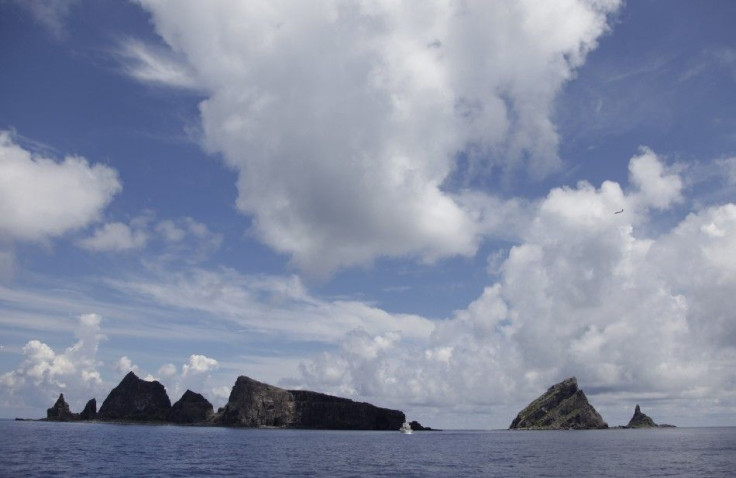Chinese Tourists Warmly Received In Japan, Criticized In China

Despite the prevailing tensions between China and Japan over a set of disputed islands in the East China Sea, about 1,500 Chinese tourists visited the island nation on a cruise ship that returned to Shanghai Tuesday, Chinese media reported.
The tourists, who formed the largest Chinese group visiting Japan since the island row erupted in September, left last Thursday from Shanghai to arrive in Yatsushiro port in Japan's Kyushu region Saturday. They reportedly received a warm reception in Japan by the Kumamoto government with banners reading “welcome” in Chinese and the city’s mayor receiving representatives of the tourists with flowers, according to Japan’s Mainichi Shimbun newspaper.
The political standoff over the five main islands called Senkaku in Japanese and Diaoyu in Chinese has hit the tourism industry heavily with the number of people visiting Japan from China sharply declining after hitting an all-time high in August, according to the Japan National Tourism Organization data.
Japanese tourism figures from January to August 2012 exceeded those of the same period in 2010, reflecting a recovery in tourism after Japan’s natural disasters. In September, the figures were down 10 percent compared to the same month in 2010.
Cancellations, mainly of group tours, had increased since September, a report in the Asahi Shimbun newspaper said.
The passengers who went on the six-day cruise that covered South Korea apart from Japan in the 75,200-ton vessel owned by Costa Cruises China have drawn heavy criticism within their country, with many Chinese netizens calling them "traitors" for "putting personal pleasure ahead of national pride,” the China Daily reported.
A tourist told the China Daily that the cruise had been arranged three months before the standoff and he didn’t want to cancel the trip despite apprehensions on how Japan would treat him: "But we never realized that while we enjoyed a great time in Japan, we were being criticized back in our home country," the unnamed businessman from Shanghai told the newspaper.
Academics, quoted by Hong Kong’s Ming Pao Daily News, observed the tour signaled the possible alleviation of the tensions ahead of the Communist Party national congress Nov. 8.
Tensions between the two Asian powers have been running for decades and escalated last month when some Chinese nationals were photographed hoisting flags on one of the islands Aug.15, on the 67th anniversary of Japan's surrender in the World War II. The Chinese were arrested by the Japanese authorities and deported to Hong Kong two days later.
Within a few days, a group of Japanese nationalists landed on one of the disputed islands, waving the Japanese flag in retaliation.
The incidents set off a new tug-of-war between the two nations, with the Chinese people taking to the streets in the biggest anti-Japan demonstration in seven years, attacking the Japanese restaurants and vehicles in Shenzhen and Hangzhou in the eastern province of Zhejiang. Crowds also staged a noisy sit-in at the gates of the Japanese consulate in Guangzhou in August, burning the Japanese flag.
The standoff was heightened Sept.11 when Japan announced the signing of a contract worth 2.05 billion yen ($26 million) to buy three of the five main Senkaku islands from its private owner.
© Copyright IBTimes 2024. All rights reserved.






















